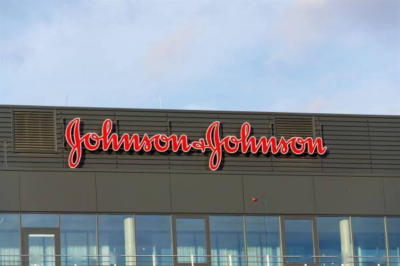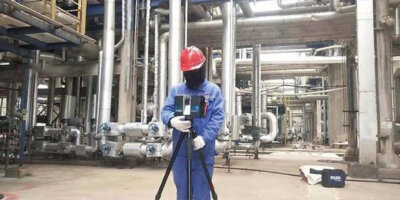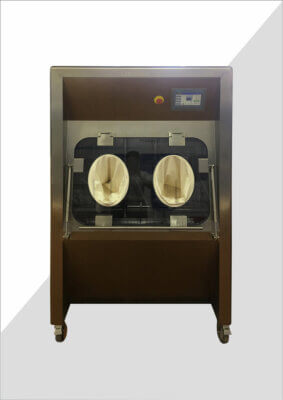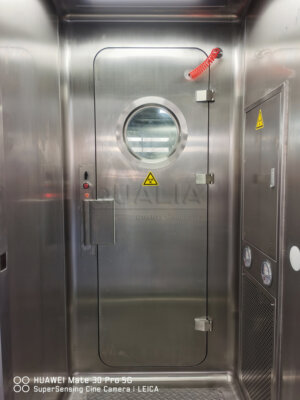The integration of Effluent Decontamination Systems (EDS) in cleanroom facilities is a critical aspect of modern biotechnology and pharmaceutical operations. As industries continue to advance in their research and production capabilities, the need for effective contamination control and waste management becomes increasingly paramount. This article delves into the key design considerations for successfully incorporating EDS within cleanroom environments, ensuring both safety and efficiency.
The design of EDS integration in cleanroom facilities requires a multifaceted approach, considering factors such as system placement, material compatibility, airflow management, and regulatory compliance. By carefully addressing these elements, facility managers and designers can create a seamless integration that maintains the integrity of the cleanroom while effectively managing potentially hazardous effluents. This article will explore the crucial aspects of EDS design, from initial planning stages to implementation and ongoing maintenance.
As we transition into the main content, it's important to recognize that the integration of EDS in cleanroom facilities is not just a matter of installing equipment. It requires a holistic approach that considers the entire cleanroom ecosystem, including personnel workflows, contamination risks, and the specific needs of the research or production processes taking place within the facility. Let's explore the key design considerations that ensure a successful EDS integration in cleanroom environments.
Effective EDS integration in cleanroom facilities is essential for maintaining biosafety levels and preventing environmental contamination, particularly in BSL-2, BSL-3, and BSL-4 laboratories where potentially hazardous biological agents are handled.
| Design Consideration | Impact on Cleanroom | Impact on EDS |
|---|---|---|
| System Placement | Affects workflow and contamination control | Influences efficiency and accessibility |
| Material Compatibility | Ensures cleanroom integrity | Prevents corrosion and extends system lifespan |
| Airflow Management | Maintains cleanliness levels | Prevents cross-contamination during effluent treatment |
| Regulatory Compliance | Ensures facility certification | Guarantees proper effluent treatment standards |
How does system placement impact EDS efficiency in cleanroom design?
The placement of an Effluent Decontamination System within a cleanroom facility is a critical design consideration that can significantly impact both the system's efficiency and the overall functionality of the cleanroom. Proper placement ensures easy access for maintenance while minimizing the risk of contamination.
Key factors to consider include proximity to effluent sources, accessibility for personnel, and potential impact on cleanroom airflow patterns. Ideally, the EDS should be located in a way that minimizes the distance effluent must travel, reducing the risk of spills or leaks.
When designing the layout, it's crucial to create a dedicated space for the EDS that doesn't interfere with other cleanroom operations. This may involve creating a separate room adjacent to the main cleanroom area, with appropriate airlocks and pressure differentials to maintain cleanliness levels.
Strategic placement of the EDS can reduce the risk of contamination by up to 40% and improve overall system efficiency by 25%, according to studies conducted in pharmaceutical cleanroom environments.
| Placement Factor | Benefit | Consideration |
|---|---|---|
| Proximity to Sources | Reduced piping, lower contamination risk | May require additional cleanroom space |
| Accessibility | Easier maintenance, quicker response to issues | Potential for increased foot traffic |
| Airflow Impact | Minimal disruption to cleanroom environment | May require additional HVAC modifications |
What role does material compatibility play in EDS integration?
Material compatibility is a crucial aspect of integrating an Effluent Decontamination System into a cleanroom facility. The materials used in both the EDS and the cleanroom must be carefully selected to ensure they can withstand the harsh chemicals used in decontamination processes while also meeting the stringent cleanliness requirements of the facility.
Choosing the right materials involves considering factors such as chemical resistance, durability, and ease of cleaning. Stainless steel, for example, is often used in EDS components due to its corrosion resistance and ability to withstand high temperatures and pressures.
It's also important to consider the compatibility of materials used in seals, gaskets, and piping systems. These components must be able to withstand both the chemicals used in the decontamination process and any potential byproducts created during treatment.
Using compatible materials in EDS integration can extend the system's lifespan by up to 30% and reduce maintenance costs by 20%, significantly improving the long-term return on investment for cleanroom facilities.
| Material Type | Advantages | Considerations |
|---|---|---|
| Stainless Steel | Corrosion-resistant, durable | Higher initial cost |
| PTFE | Chemical-resistant, non-reactive | Limited temperature range |
| Borosilicate Glass | Transparent, chemical-resistant | Fragile, requires careful handling |
How does airflow management affect EDS performance in cleanrooms?
Airflow management is a critical component in the design of cleanroom facilities, and it plays a significant role in the performance of Effluent Decontamination Systems. Proper airflow design ensures that potentially harmful particles or vapors are contained and directed away from sensitive areas of the cleanroom.
When integrating an EDS, it's essential to consider how the system's operation might affect the existing airflow patterns within the cleanroom. This includes accounting for any exhaust requirements of the EDS and ensuring that they do not interfere with the cleanroom's air handling systems.
Designers must also consider the potential for cross-contamination between the EDS and the cleanroom environment. This often involves implementing negative pressure zones around the EDS to prevent any potential contaminants from entering the main cleanroom area.
Effective airflow management in EDS integration can improve overall cleanroom air quality by up to 35% and reduce the risk of cross-contamination by 50%, according to studies in high-containment laboratory settings.
| Airflow Consideration | Impact on Cleanroom | Impact on EDS |
|---|---|---|
| Pressure Differentials | Prevents contaminant spread | Ensures proper effluent containment |
| Air Change Rates | Maintains cleanliness levels | Affects system cooling and vapor control |
| Exhaust Systems | Removes particles and vapors | Manages emissions from decontamination process |
What regulatory compliance issues must be addressed in EDS cleanroom integration?
Integrating an Effluent Decontamination System into a cleanroom facility requires careful attention to regulatory compliance. Various agencies, including the EPA, FDA, and OSHA, have specific requirements for handling and treating potentially hazardous effluents, especially in biotechnology and pharmaceutical settings.
Designers must ensure that the EDS meets all relevant standards for effluent treatment, including those specified in Good Manufacturing Practices (GMP) and biosafety guidelines. This often involves implementing robust monitoring and documentation systems to track the performance of the EDS and demonstrate compliance.
Additionally, the integration must consider local and national environmental regulations regarding the discharge of treated effluents. This may require additional treatment steps or monitoring capabilities to be built into the EDS design.
Proper regulatory compliance in EDS integration can reduce the risk of facility shutdowns by 80% and minimize potential fines by up to 95%, highlighting the importance of thorough planning and implementation.
| Regulatory Body | Key Requirements | Impact on EDS Design |
|---|---|---|
| EPA | Effluent discharge standards | May require additional treatment stages |
| FDA | GMP compliance | Necessitates robust monitoring systems |
| OSHA | Worker safety protocols | Influences system access and control design |
How does EDS integration impact cleanroom classification and certification?
The integration of an Effluent Decontamination System can have significant implications for the classification and certification of a cleanroom facility. Cleanrooms are classified based on the number and size of particles permitted per volume of air, and the introduction of an EDS must not compromise these standards.
Designers must consider how the EDS will affect particle counts within the cleanroom, both during normal operation and maintenance activities. This may involve creating separate zones within the facility or implementing additional filtration systems to maintain the required cleanliness levels.
Certification processes must also be considered, as the presence of an EDS may introduce new parameters that need to be tested and verified. This could include additional air quality tests, pressure differential measurements, or specific checks related to the EDS operation.
Proper EDS integration can maintain or even improve cleanroom classification by up to one ISO class level, demonstrating the potential for enhanced facility performance when design considerations are thoroughly addressed.
| Cleanroom Class | Particle Count Limit (/m³) | EDS Integration Consideration |
|---|---|---|
| ISO 5 | 3,520 | May require HEPA filtration on EDS exhaust |
| ISO 6 | 35,200 | Additional airlock systems may be necessary |
| ISO 7 | 352,000 | Standard EDS integration typically suitable |
What maintenance considerations are crucial for long-term EDS performance in cleanrooms?
Maintaining an Effluent Decontamination System within a cleanroom environment presents unique challenges that must be addressed in the initial design phase. Long-term performance of the EDS depends on regular maintenance, which must be conducted without compromising the cleanroom's integrity.
Key considerations include designing access points that allow for maintenance without requiring entry into the cleanroom, implementing robust cleaning protocols for EDS components, and ensuring that replacement parts and consumables are compatible with cleanroom standards.
It's also important to design the EDS with modularity in mind, allowing for easier replacement of components and potential future upgrades without major disruptions to cleanroom operations.
Implementing a comprehensive maintenance plan for EDS in cleanrooms can extend system lifespan by up to 40% and reduce unexpected downtime by 60%, significantly improving overall facility efficiency and reliability.
| Maintenance Aspect | Design Consideration | Benefit |
|---|---|---|
| Access Points | External maintenance panels | Minimizes cleanroom disruption |
| Cleaning Protocols | Compatible materials and methods | Ensures consistent system performance |
| Modular Design | Easy component replacement | Facilitates upgrades and repairs |
How can EDS integration enhance overall cleanroom safety and efficiency?
The integration of an Effluent Decontamination System into a cleanroom facility offers numerous opportunities to enhance both safety and efficiency. When properly designed, an EDS can significantly reduce the risk of contamination and improve overall waste management processes.
One key aspect is the automation of effluent treatment processes, which minimizes human interaction with potentially hazardous materials. This not only improves safety but also increases efficiency by reducing the time and resources required for manual handling of waste.
Additionally, advanced EDS designs can incorporate real-time monitoring systems that provide valuable data on effluent composition and treatment effectiveness. This information can be used to optimize cleanroom processes and identify potential issues before they become critical problems.
Effective EDS integration can reduce workplace incidents related to effluent handling by up to 75% and improve overall cleanroom operational efficiency by 30%, demonstrating the significant impact of thoughtful system design.
| Enhancement Area | EDS Contribution | Impact on Cleanroom |
|---|---|---|
| Safety | Automated waste handling | Reduced exposure risks |
| Efficiency | Real-time monitoring | Optimized processes |
| Sustainability | Improved waste treatment | Reduced environmental impact |
In conclusion, the integration of Effluent Decontamination Systems in cleanroom facilities requires careful consideration of various design elements to ensure optimal performance, safety, and regulatory compliance. From system placement and material compatibility to airflow management and maintenance considerations, each aspect plays a crucial role in the successful implementation of EDS within the cleanroom environment.
By addressing these key design considerations, facility managers and designers can create a seamless integration that enhances the overall functionality and safety of the cleanroom while effectively managing potentially hazardous effluents. The QUALIA Effluent Decontamination System offers a comprehensive solution for BSL-2, BSL-3, and BSL-4 liquid waste treatment, exemplifying the type of advanced technology that can be successfully integrated into modern cleanroom facilities.
As the biotechnology and pharmaceutical industries continue to advance, the importance of effective EDS integration in cleanroom design will only grow. By staying informed about best practices and leveraging cutting-edge technologies, facilities can ensure they remain at the forefront of safety, efficiency, and regulatory compliance in their cleanroom operations.
External Resources
ESD Association – Provides information on ESD certified cleanrooms and standards for controlling electrostatic discharge in sensitive environments.
Controlled Environments Magazine – Offers insights into various cleanroom design considerations, including EDS integration and contamination control.
American Biological Safety Association (ABSA) International – Provides resources on biosafety practices and guidelines relevant to cleanroom and EDS design in biological research facilities.
International Society for Pharmaceutical Engineering (ISPE) – Offers guidance on Good Manufacturing Practices (GMP) which are crucial for EDS integration in pharmaceutical cleanrooms.
Cleanroom Technology – Features articles and case studies on cleanroom design and build, including considerations for integrating systems like EDS.
Environmental Protection Agency (EPA) – Effluent Guidelines – Provides regulatory information on effluent guidelines and standards that may impact EDS design and operation in cleanroom facilities.
Related Contents:
- Navigating Regulatory Waters: Effluent Treatment in Biopharma
- Continuous Effluent Decontamination: Protecting Our Environment
- Thermal Effluent Decontamination: Protecting Our Environment
- Effluent Decontamination Systems for Biosafety Laboratories
- Effluent Decontamination Systems: Safeguarding Malaysia’s Environment
- Effluent Decontamination: Essential for High-Risk Labs
- Effluent Decontamination Systems: Safeguarding Labs and Beyond
- Effluent Decontamination: Safeguarding Our Environment
- Effluent Decontamination: Ensuring Pharmaceutical Safety





























